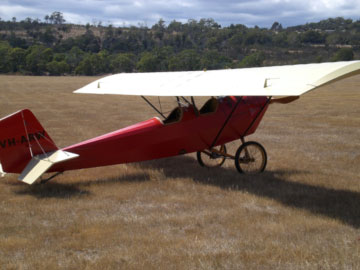
An amateur-built 1933 Pietenpol Air Camper collided with terrain after the landing gear caught the top wire of an electric fence.
The ATSB is warning pilots that when they are not operating from a designated landing area they need to ensure the area is suitable. This comes after an accident that occurred on 19 May 2013 near St Leonards, Tasmania. The pilot was taking a passenger on a scenic flight around Launceston, starting from a paddock behind his home. He had operated the aircraft from the paddock in the past, but not for a few years. A week before the accident, the pilot surveyed the area by car.
On surveying the accident site, the pilot realised that the aircraft’s landing gear had caught the top wire of an electric fence he had not noticed...
The aircraft was operating normally and became airborne at about 35 knots indicated airspeed. The pilot held the aircraft low, aiming to clear a fence at the end of the paddock. Nearing the fence, the pilot heard a loud noise and the nose of the aircraft jolted to the right.
The airspeed quickly decreased, as the pilot attempted to hold the wings level. After initially climbing to about 10 ft, the aircraft impacted the ground, breaking the landing gear. The aircraft skidded on its nose and then pitched over onto its back, breaking the propeller.
Both the pilot and the front seat passenger exited the aircraft without injury. On surveying the accident site, the pilot realised that the aircraft’s landing gear had caught the top wire of an electric fence he had not noticed, located a short distance before the paddock’s main fence.
Pilots need to assess proposed landing areas carefully, especially if they are not using a designated landing area. A thorough survey of the area to be used for take-off and landing should be completed immediately prior to use.
Read the report: Collision with terrain involving a Pietenpol Air Camper, VH-ARW, 9 km north of Launceston, Tasmania, on 19 May 2013


